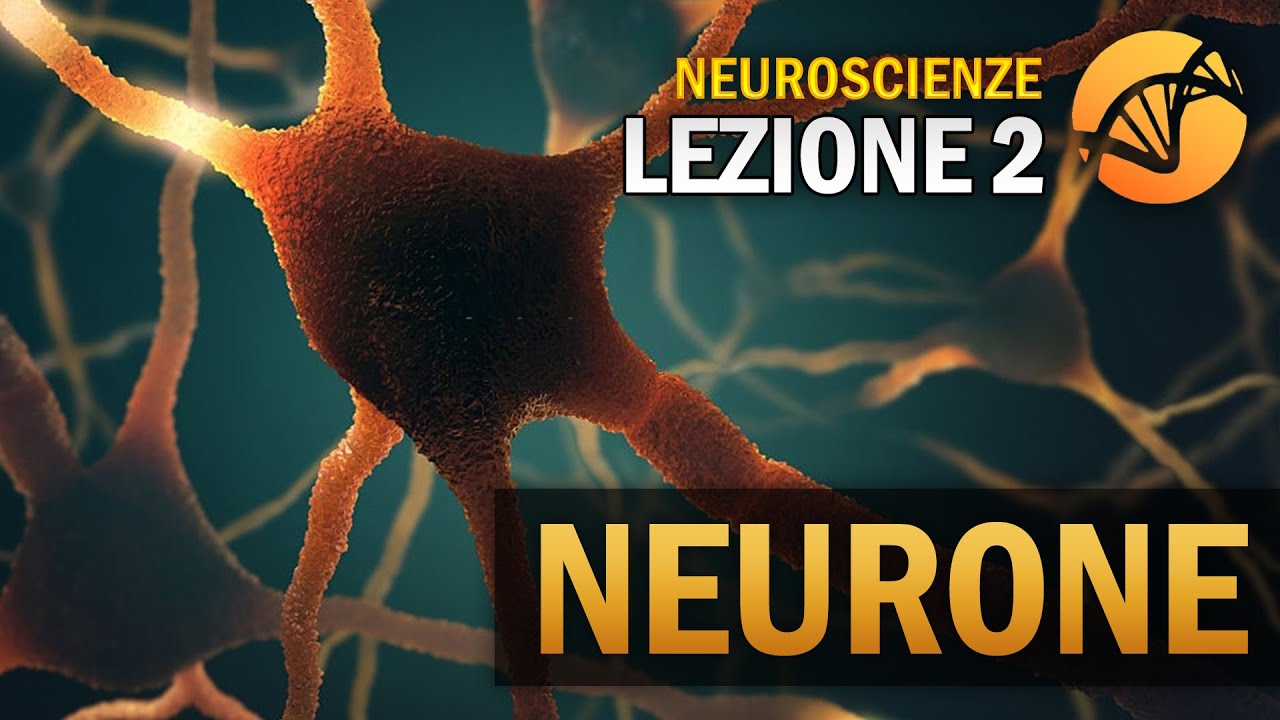Action Potential in the Neuron
Summary
TLDRThis educational script delves into the anatomy and function of a neuron, highlighting its four main components: dendrites, cell body, axon, and axon terminal. It explains how neurons transmit signals via action potentials, which are dependent on the movement of ions like sodium and potassium. The script also details the resting membrane potential, the role of ion channels, and the process of repolarization. It further discusses the absolute and relative refractory periods, and how myelin sheaths increase the speed of signal transmission through a mechanism known as saltatory conduction.
Takeaways
- 🧠 A neuron consists of dendrites, cell body, axon, and axon terminal, each with a specific role in receiving, processing, and transmitting information.
- 🌐 Dendrites receive signals, the cell body integrates them, and the axon carries the information to the axon terminal for transmission to the next cell.
- 🚀 The action potential, or 'firing' of a neuron, occurs when stimulation is strong enough to trigger a signal along the axon.
- 🔄 Ions, such as sodium, potassium, and chloride, play a crucial role in the neuron's function, both at rest and during an action potential.
- 💡 The neuron's resting potential is around -70 millivolts, indicating a net negative charge inside the cell compared to the outside.
- 🛡 The electrochemical gradient, resulting from the unequal distribution of ions, is essential for the neuron's ability to transmit signals.
- 🚪 Ion channels, including voltage-gated and ligand-gated types, regulate the flow of ions across the cell membrane.
- ⚡ The sodium-potassium pump actively transports ions against their concentration gradient, maintaining the resting state and readiness to fire.
- 🔁 The process of an action potential involves depolarization, repolarization, and hyperpolarization, returning the neuron to its resting state.
- 🏃♂️ Myelin sheaths increase the speed of action potential conduction along axons through a process called saltatory conduction.
Q & A
What are the four main parts of a neuron?
-The four main parts of a neuron are the dendrites, the cell body, the axon, and the axon terminal.
What is the function of dendrites in a neuron?
-Dendrites receive incoming signals or information from other neurons.
How does the cell body of a neuron contribute to its function?
-The cell body, or soma, processes and integrates the information received by the dendrites.
What role does the axon play in the transmission of information within a neuron?
-The axon carries the information along its length, from one part of the neuron to another, often over long distances.
How does the axon terminal facilitate communication between neurons?
-The axon terminal transmits information to the next cell in the chain, often by releasing neurotransmitters.
What is a nerve, and how is it related to axons?
-A nerve is a bundle of axons traveling together, often over long distances to transmit information.
How does the strength of incoming stimulation affect a neuron's decision to pass a signal along?
-If the stimulation is strong enough, the neuron will transmit the signal along its axon in an action potential, which is referred to as the neuron firing.
What is the resting membrane potential of a neuron, and what does it indicate?
-The resting membrane potential of a neuron is approximately minus 70 millivolts, indicating that the inside of the cell is more negative than the outside when at rest.
What are the two types of gradients that contribute to the electrochemical gradient across a neuron's membrane?
-The two types of gradients contributing to the electrochemical gradient are the chemical gradient, due to the unequal distribution of ions, and the electrical gradient, due to the difference in charge across the membrane.
How do ion channels facilitate the movement of ions across the neuron's membrane?
-Ion channels, which can be voltage-gated, ligand-gated, or mechanically-gated, facilitate the movement of ions by allowing them to passively diffuse along their concentration gradient.
What is the sodium-potassium pump, and what is its role in maintaining the neuron's resting state?
-The sodium-potassium pump is a protein that uses energy from ATP hydrolysis to actively transport ions against their concentration gradient, helping to restore the chemical and electrical gradients necessary for the neuron's resting state.
What happens during an action potential, and how does it relate to the neuron's membrane potential?
-During an action potential, the neuron's membrane potential changes from its resting state to a less negative or even positive value due to the influx of sodium ions, followed by an outflux of potassium ions, which is a result of the opening and closing of voltage-gated ion channels.
What is the significance of the absolute refractory period in the context of neuronal signaling?
-The absolute refractory period is a period when a neuron cannot fire another action potential, regardless of stimulation, which prevents action potentials from occurring too quickly and ensures unidirectional transmission along the axon.
How does the presence of myelin sheaths around axons affect the speed of action potential transmission?
-Myelin sheaths increase the speed of action potential transmission by enabling saltatory conduction, where the signal appears to jump from one node of Ranvier to the next, speeding up the process.
Outlines

This section is available to paid users only. Please upgrade to access this part.
Upgrade NowMindmap

This section is available to paid users only. Please upgrade to access this part.
Upgrade NowKeywords

This section is available to paid users only. Please upgrade to access this part.
Upgrade NowHighlights

This section is available to paid users only. Please upgrade to access this part.
Upgrade NowTranscripts

This section is available to paid users only. Please upgrade to access this part.
Upgrade NowBrowse More Related Video

Structure and Function of a Neuron

Sistem Saraf: Anatomi Neuron | Ilmu Biomedik Dasar | Brainy Panda

Il Neurone | NEUROSCIENZE - Lezione 2

The Nervous System: The Neuron (Nerve Cell)

Nervous Tissue | Structural Organization in Animals | Anatomy | Inter 2nd year Class 11 Biology

The Brain—Lesson 2—How Neurotransmission Works
5.0 / 5 (0 votes)